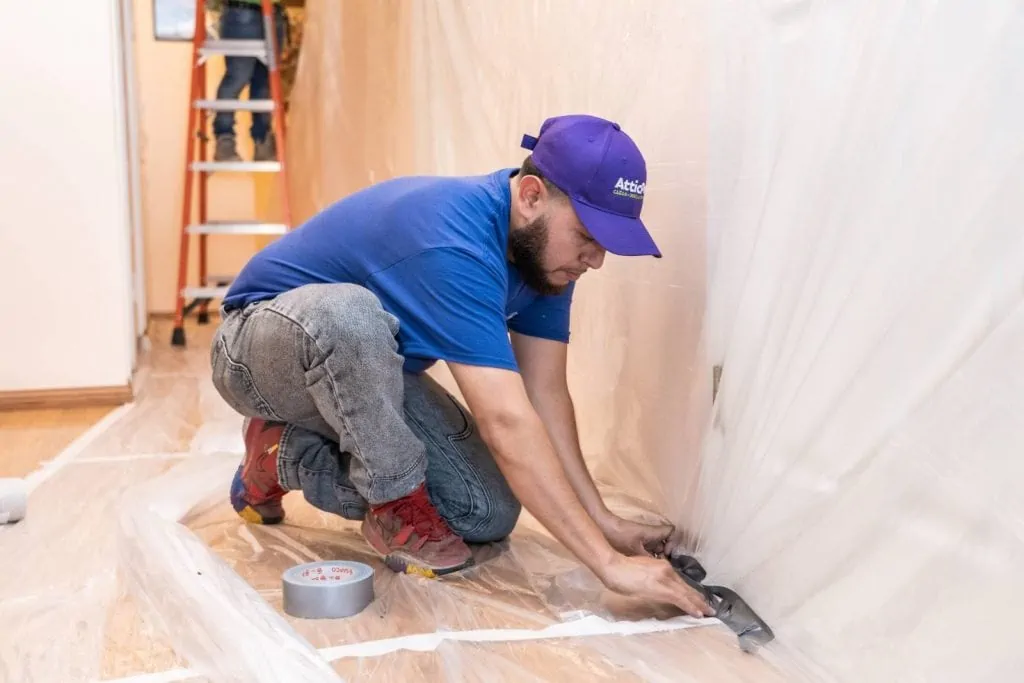🏠 Long-Term Rodent Prevention Strategies for Attic and Home
Rodents such as mice and rats can wreak havoc in your attic and home, leading to insulation damage, health risks, and pest problems. Whether it’s roof rats or common house mice, preventing these pests requires an effective method that focuses on long-term rodent control and attic pest prevention. In this guide, we’ll show you how to protect your home from rodent infestations with exclusion methods and sustainable long-term solutions.
🐭 Why Rodents Target Your Attic and Home
Rodents are naturally drawn to attics due to the warmth, shelter, and food sources they find there. Your attic and other parts of your home are vulnerable to infestation if the right exclusion methods aren’t in place. Here’s why rodents like your attic:
- Warmth: Attics are often warmer than other areas of your home, especially in colder months.
- Safety: Rodents look for quiet, undisturbed areas to nest, and your attic offers the perfect hideaway.
- Food Sources: Leftover food, bird seeds, and even nest material can attract rodents.
🛠️ Long-Term Rodent Control Strategies
Here’s how to implement long-term rodent control to safeguard your attic and home:
- Seal Entry Points
- Rodents can enter through surprisingly small gaps. Exclusion methods are key to stopping them. Focus on:
- Common entry points such as cracks and holes around windows and doors, rooflines, vents, chimneys, and foundation lines.
- Use steel wool to seal small gaps, and caulk or foam for larger holes. Ensure all access points are tightly sealed to prevent rodents gaining access.
- Proper Insulation Installation
- Rodents often destroy insulation as part of their nesting habits. Installing rodent-resistant insulation is crucial. Consider spray foam insulation or other options that prevent rodents from chewing and damaging the material. This will help protect your insulation, maintain energy efficiency, and prevent pest problems.
- Proper Ventilation
- Good ventilation helps reduce moisture and keeps your attic less attractive to rodents. It also prevents ice buildup and keeps your attic environment dry. Proper airflow ensures that mice and rats aren’t able to nest and thrive in your attic.
- Insulation Removal and Replacement
- If your attic insulation is damaged, it’s important to remove and replace it with fresh, rodent-resistant materials. This not only ensures better energy efficiency but also helps improve indoor air quality by eliminating contaminated insulation that could harbor pests.
- Integrated Pest Management
- Long-term rodent control is most effective with an integrated pest management This strategy combines multiple tactics, such as sealing entry points, installing traps, and using bait stations to control rodents. It also involves maintaining a clean environment and reducing food sources to make your home less inviting to rodents.
- Regular Inspections
- Regular inspections of your attic and home are essential to detect rodent activity early. Look for:
- Droppings and gnaw marks on insulation, wiring, or wood.
- Rodent nests made from shredded insulation, paper, or other materials.
- Signs of rodent activity around points of entry.
💡 When to Call Pest Control Services
While DIY methods can help, there are times when professional pest control services are necessary. Professionals can:
- Conduct a detailed inspection to identify points of entry and vulnerabilities in your attic.
- Use advanced exclusion methods and bait stations to eliminate pests and prevent future infestations.
- Offer long-term solutions like proper insulation installation and pest-proofing your home.
🔒 Protect Your Insulation and Save Money
Rodents can damage your attic insulation, which leads to higher energy bills and costly repairs. By implementing long-term rodent control measures, you’ll prevent pest infestations and protect your home’s energy efficiency. Maintaining proper insulation and sealing entry points ensures that your attic remains a rodent-free zone, saving you money on repairs and energy costs.
✅ Final Thoughts: Protect Your Home from Rodent Damage
To avoid expensive insulation damage, health risks, and the need for costly repairs, it’s essential to implement long-term rodent control strategies. Sealing entry points, replacing damaged insulation, and maintaining proper ventilation will help keep your attic and home pest-free. Don’t wait for a rodent infestation—take action now to prevent future pest problems and safeguard your home.
📞 Need professional help with rodent prevention? Contact us today for an inspection and effective pest control services tailored to your needs!

